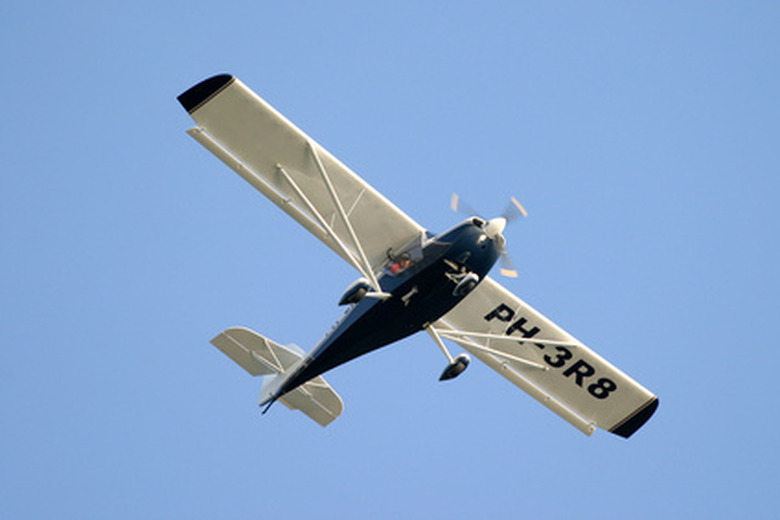Lycoming Engine Specifications
In 1907, the Demorest Manufacturing Company, a sewing machine, bicycle and typewriter manufacturer, became the Lycoming Foundry and Machine Company, which began designing and producing all types of engines. Now, Lycoming primarily focuses on aviation engines, and they are the only company currently certified to produce aerobatic and helicopter piston engines. As of 2010, Lycoming produces five different models of engines, each with its own different series.
Certified and Non-certified Engines
Certified and Non-certified Engines
These horizontally opposed, air-cooled engines come in a 235, 320, 360, 390, 540, 580 or 720 series, offering four, six or eight cylinders. Each series then has its own models, designated by different letters. There are over 580 models available, as of 2010. Certified engines come with a two-year part and labor warranty, while non-certified engines are only available in kits. Since non-certified engines are experimental and custom-made, there are no specifications available for them.
The horsepower for Lycoming certified engines ranges from 115 to 400, and they weigh between 243 and 607 lbs. The 235 offers compression ratios of 6.75 to 1, 9.7 to 1, or 8.5 to 1, while the 720 offers 8.7 to 1. They are all roughly the same size: the 235 series measures 22.4 by 32 by approximately 30 inches, while the 720 measures 22.53 by 34.25 by approximately 46 inches.
Aerobatic Engines
Aerobatic Engines
Lycoming introduced this engine in 1967, and it remains the only manufacturer of this motor. Available in over 30 models, the horsepower for this engine ranges from 150 to 320 at 2,700 rpm. With a compression ratio of 7 to 1, 8.5 to 1, 8.7 to 1, or 8.9 to 1, this engine weighs between 258 and 449 lbs. It measures between 19.35 and 24.48 inches high, between 32.24 and 34.25 inches wide, and between 29.05 and 40.24 inches long. These engines are available with lightweight starters, electronic ignitions, air conditioning provisions, a remote oil filter, and fixed-pitch or constant-speed propeller applications.
Helicopter Engines
Helicopter Engines
Lycoming powered the first single main-rotor helicopter in 1938, and it still offers the only FAA-certified helicopter piston engines. Available with either four or six cylinders, these engines produce 130 to 235 horsepower at 2,400 to 3,200 rpm. Weighing between 246 and 447 lbs., the compression ratios for these motors can be 8 to 1, 8.5 to 1, 8.7 to 1, or 10 to 1. Measuring 19.48 to 24.56 inches high, their width ranges from 32.24 to 34.25 inches, and their length ranges from 29.81 to 38.62 inches. They displace between 320 and 540 cubic inches. Their camshafts, connecting rods and crankshafts are made of forged steel, and they use chromium-modified iron exhaust-valve guides.
Cite This Article
MLA
Gronot, Amanda. "Lycoming Engine Specifications" sciencing.com, https://www.sciencing.com/list-7502810-lycoming-engine-specifications/. 7 August 2017.
APA
Gronot, Amanda. (2017, August 7). Lycoming Engine Specifications. sciencing.com. Retrieved from https://www.sciencing.com/list-7502810-lycoming-engine-specifications/
Chicago
Gronot, Amanda. Lycoming Engine Specifications last modified March 24, 2022. https://www.sciencing.com/list-7502810-lycoming-engine-specifications/
